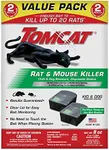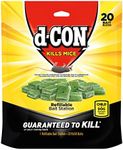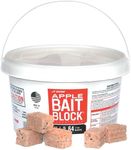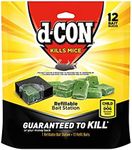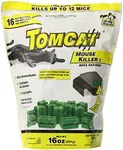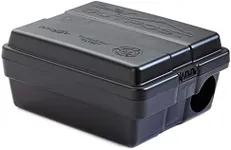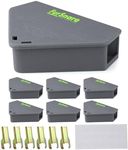Buying Guide for the Best Rat Baits
Choosing the right rat bait is crucial for effectively managing and eliminating rodent problems. The right bait can make a significant difference in how quickly and efficiently you can control the rat population in your home or business. When selecting a rat bait, it's important to consider several key factors to ensure you pick the best option for your specific situation. Here are the key specifications to consider and how to navigate them.Type of BaitRat baits come in various forms such as blocks, pellets, and soft baits. The type of bait is important because it affects how easily rats can consume it and how well it can be placed in different environments. Blocks are durable and can be secured in bait stations, making them ideal for outdoor use. Pellets are small and can be scattered in hard-to-reach places, while soft baits are highly palatable and effective in attracting rats. Choose the type based on where you plan to place the bait and the feeding habits of the rats in your area.
Active IngredientThe active ingredient in rat bait determines its effectiveness and how quickly it works. Common active ingredients include anticoagulants like bromadiolone and difenacoum, which cause internal bleeding, and non-anticoagulants like bromethalin, which affects the nervous system. Anticoagulants usually require multiple feedings and are safer around pets and children, while non-anticoagulants can be lethal with a single feeding but may pose higher risks. Consider the level of infestation and safety concerns when choosing the active ingredient.
Toxicity LevelToxicity level refers to how potent the bait is and how much is needed to kill a rat. High-toxicity baits are effective for severe infestations but can be dangerous if not handled properly. Low-toxicity baits are safer but may require more time and multiple feedings to be effective. Assess the severity of your rat problem and the presence of non-target animals or children when deciding on the toxicity level.
Weather ResistanceWeather resistance is crucial if you plan to use the bait outdoors. Some baits are formulated to withstand moisture and extreme temperatures, ensuring they remain effective in various weather conditions. Weather-resistant baits are ideal for outdoor use, while indoor baits do not need this feature. Consider where you will be placing the bait and the typical weather conditions in your area.
PalatabilityPalatability refers to how attractive the bait is to rats. Highly palatable baits are more likely to be consumed quickly, leading to faster results. Baits with added flavors or scents can increase their attractiveness. If you have noticed that rats are not taking the bait, switching to a more palatable option may help. Consider the feeding preferences of the rats in your area and choose a bait that is likely to be irresistible to them.
Safety FeaturesSafety features are important to prevent accidental poisoning of non-target animals and humans. Some baits come with tamper-resistant bait stations that only allow rats to access the bait. These are especially important if you have pets or children. Look for baits with built-in safety features or consider purchasing separate bait stations to enhance safety.
